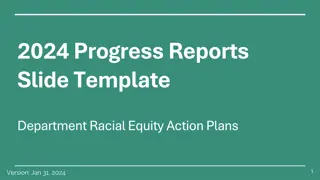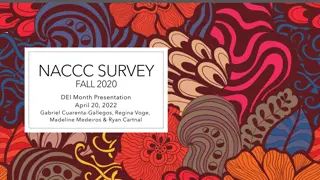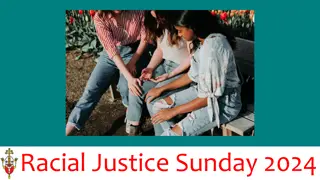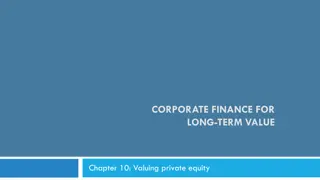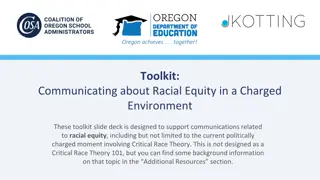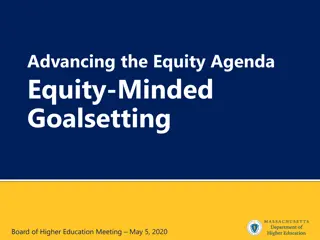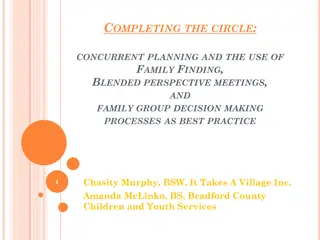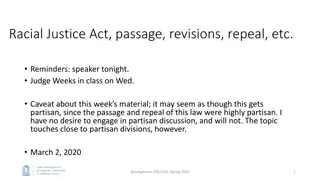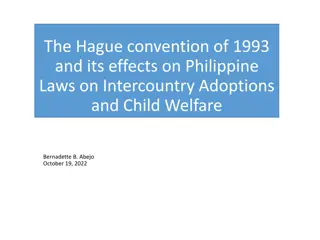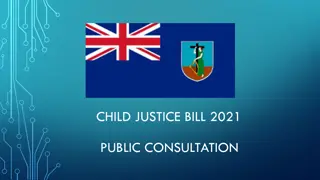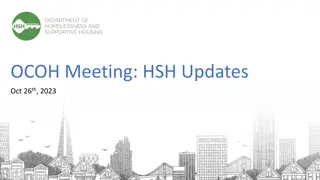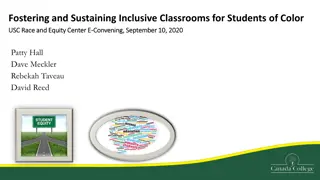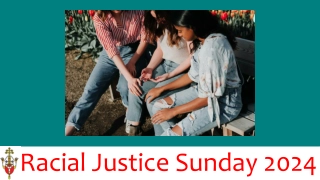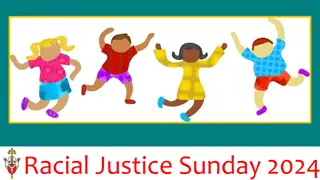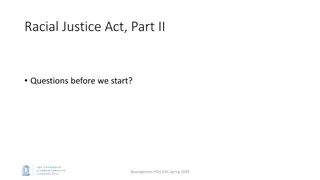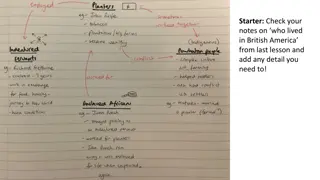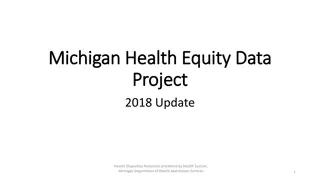Promoting Racial Justice in Child Welfare: Strategies for Building Equity
Addressing racial injustice in the child welfare system by leveraging cultural proficiency models to create a race equity culture. The session focuses on changing behaviors to transform the existing culture, acknowledging and dismantling legacies of oppression, and understanding the various levels at which racism operates. Antidotes at each level - internalized, interpersonal, institutional, and structural - are provided to promote racial equity and foster collaboration across systems.
Download Presentation

Please find below an Image/Link to download the presentation.
The content on the website is provided AS IS for your information and personal use only. It may not be sold, licensed, or shared on other websites without obtaining consent from the author. Download presentation by click this link. If you encounter any issues during the download, it is possible that the publisher has removed the file from their server.
E N D
Presentation Transcript
RACIAL JUSTICE IN THE CHILD WELFARE SYSTEM: Leveraging CPM to build a race equity culture
SESSION 2: Changing our Behaviors to Change our Culture
Harm acknowledgement Land acknowledgement is not enough Our vision is anti-oppression, anti-racism, and active dismantling We are standing on legacies of oppression Personal acknowledgement Lateral & internalized oppression
Recap of Last Session Creating shared language; defining terms & concepts Homework / pre-work opportunities: RACE: The Power of an Illusion Reading WSC characteristics Having conversations with my team Attending/participating in a regional conversation
Whats 1 thing? What s one thing that really resonated with you, that you ve thought about since our last session? OR: What s one thing that you were able to try on, implement, or move forward since our last session?
Racism operates at 4 levels Internalized (Personal) Within Within individuals Beliefs & biases, influenced by culture Internalized oppression / superiority Interpersonal Between Between individuals Personal prejudice & intentional bias in action Institutional Within institutions & systems institutions & systems Policies & practices that maintain discrimination / oppression Structural Among institutions & across Among institutions & across society society In human services, collaboration across systems can reinforce racism s impact
Antidotes on every level Internalized (Personal) Decolonize your mind Interrogate the dominant narrative Do your own internal work Interpersonal Listen & believe those affected Build relationships across differences Institutional Understand & speak up about race equity Engage those affected by decisions in decision-making Structural Be accountable for your part in dismantling racism Publicly advocate for race equity Cede power to POC
The 4 pillars of the work White Supremacy Culture Cognitive Bias Trauma Organizational Culture
White supremacy culture characteristics Perfectionism Power hoarding Sense of urgency Fear of open conflict Defensiveness Individualism Quantity over quality I m the only one Worship of the written word Progress is bigger, more Only one right way Objectivity Paternalism Right to comfort Either/or thinking
White Supremacy Culture Characteristics Individualism People often believe that problems & challenges are best handled alone Individuals have little experience / comfort working in teams Environment generally lacks mutual support Leads to isolation Accountability thought of as top-down, rarely from bottom-up (internally and externally) Competition is more highly valued than cooperation Where cooperation IS valued, it is often under-resourced & under- developed
White Supremacy Culture Characteristics Fear of Open Conflict People in power avoid conflict & disagreement When someone raises an uncomfortable issue, what s interrogated is the person, not the issue Politeness is used to deny people s authenticity An employee angered by racist acts is expected to mute their emotional reaction to remain polite, cordial, professional Bringing up hard issues is equated with being impolite, rude, unprofessional
White supremacy culture characteristics Perfectionism Power hoarding Sense of urgency Fear of open conflict Defensiveness Individualism Quantity over quality I m the only one Worship of the written word Progress is bigger, more Only one right way Objectivity Paternalism Right to comfort Either/or thinking
BUILDING CONNECTIONS THROUGH CONVERSATION
CPM Element CPM Element Antidote Antidote CPM Leadership Behavior CPM Leadership Behavior Create a learning environment White Supremacy Culture antidotes connect to CPM leadership behaviors! Ensure that the organization is working toward shared goals and that people have a collective intention to learn from mistakes together. Engagement Show that you care Foster a culture of mutual support where people feel safe bringing problems to the group. Recognize staff strengths and successes Make sure that recognition is given to all those who participate in an effort, not just the leaders or the most public person. Model teaming Embed teamwork and collaboration in the organization s values, structures, policies, and ways of doing. Teaming Articulate that collaboration is a key skill you need in yourself and your team, and evaluate people based on their ability to work as part of a team and to accomplish shared goals.
Antidotes on every level Internalized (Personal) Decolonize your mind Interrogate the dominant narrative Do your own internal work Interpersonal Listen & believe those affected Build relationships across differences Institutional Understand & speak up about race equity Engage those affected by decisions in decision-making Structural Be accountable for your part in dismantling racism Publicly advocate for race equity Cede power to POC
What is Your Countys Equity Story? How will you know where you are, if you do not know where you have been? How does your county s story connect to the larger CA story? Who are the griots for your equity story? If you do nothing else, what legacy can you leave? How can you know where to go, if you are not clear about where you are?
Organizational Self-Assessment You are already doing this work ... Where are you already doing work in these areas related to REI? What is the story? Using the Self-Assessment Tool OR the 4 Levels of Racism (-isms): What areas are gaps for your organization?
Organizational Self-Assessment Tool Commitment, Leadership & Governance Racial Equity Policies & Implementation Practices Organizational Climate, Culture & Communications Service Equity Consumer Voice & Influence Workforce Composition & Quality Community & Tribal Consultation & Collaboration Resource Allocation & Contracting Practices Data, Metrics & CQI


